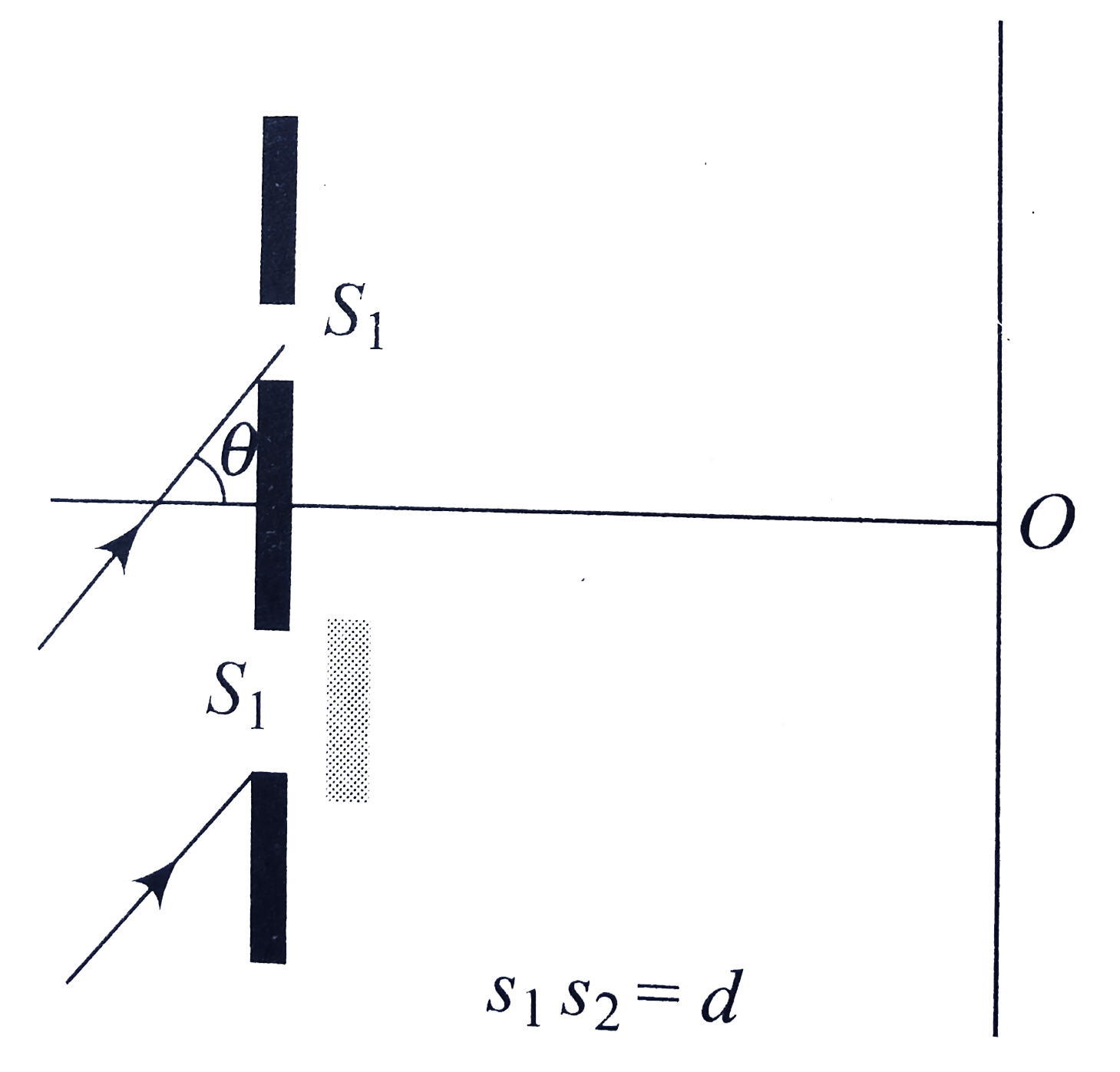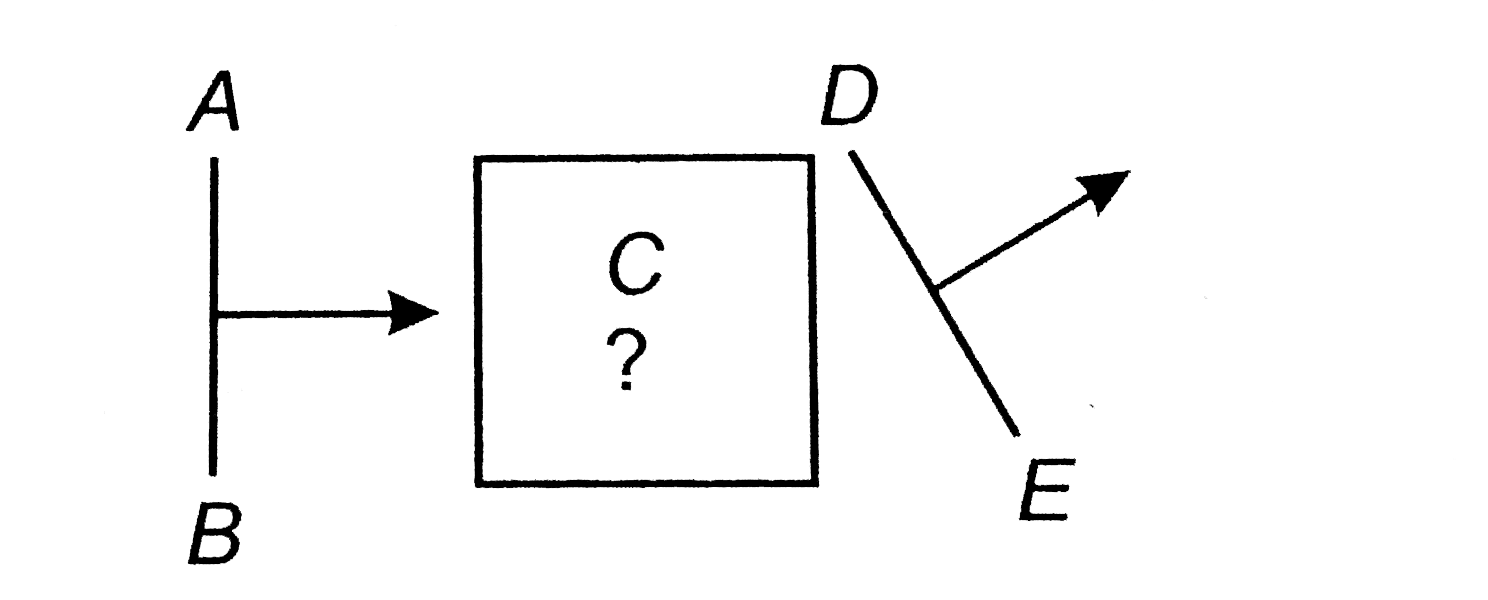Complete Solutions to Section D - Chapter End Test of chapter WAVE OPTICS of Class 12 book with complete answers and questions
| Class 12 | PHYSICS |
| Chapter | WAVE OPTICS |
| A2Z | Section D - Chapter End Test |
| Number Of Questions | 29 |
| Academic Year | 2023-24 |
The angle of incidence at which reflected light is totally polarized for reflection from air to glass (refraction index n) is
02:04View SolutionThe maximum number of possible interference maxima for slit-separation equal to twice the wavelength in Young's double-slit experiment is
03:06View SolutionWhen an unpolarised light of inensity `I_0` is incident on a polarizing sheet, the intensity of the light which does not get transmittted is
01:58View SolutionA Young's double slit experiment uses a monochromatic source. The shape of the interference fringes formed on a screen is
02:08View SolutionIf `I_0` is the intensity of the principal maximum in the single slit diffraction pattern. Then what will be its intensity when the slit width is doubled?
03:01View SolutionTwo beam of light having intensities I and 4I interfere to produce a fringe pattern on a screen. The phase difference between the beams is `(pi)/(2)` at point A and `pi` at point B. Then the difference between resultant intensities at A and B is : `(2001 , 2M)`
02:16View SolutionIn Young's double slit experiment, the sepcaration between the slits is halved and the distance between the slits and the screen is doubled. The fringe width is
01:23View SolutionIn a Young's double slit experiment, 12 fringes are observed to be formed in a certain segment of the screen when light of wavelength 600nm is used. If the wavelength of light is changed to 400nm, number of fringes observed in the same segment of the screen is given by
01:38View SolutionYellow light is used in single slit diffraction experiment with slit width `0.6mm`. If yellow light is replaced by X-rays then the pattern will reveal
02:23View SolutionA double slit arrangement produces fringes for light `lambda=5890Å` which are `0.2^@` apart. If the whole arrangement is fully dipped in a liquid of `mu=4/3`, the angular fringes separation is
02:12View SolutionIn a wave, the path difference corresponding to a phase difference of `phi` is
02:01View SolutionIn a spectrometer experiment, monochromatic light is incident normally on a diffraction grating having `4.5xx10^5` lines per metre. The seond order line is seen at an angle of `30^@` to the normal. What is the wavelength of the light?
03:24View SolutionA beam of light of wavelength `600nm` from a distant source falls on a single slit `1mm` wide and the resulting diffraction pattern is observed on a screen `2m` away. The distance between the first dark fringes on either side of the central bright fringe is
03:32View SolutionA parallel monochromatic beam of light is incident normally on a narrow slit. A diffraction pattern is formed on a screen placed perpendicular to the direction of the incident beam. At the first minimum of the diffraction pattern, the phase difference between the rays coming from the two edges of the slit is
01:23View SolutionIn Young's double slit experiment intensity at a point is `((1)/(4))` of the maximum intensity. Angular position of this point is
02:51View SolutionA beam of electron is used `YDSE` experiment . The slit width is d when the velocity of electron is increased ,then
01:54View SolutionTwo coherent monochromatic light beams of intensities I and 4I are superposed. The maximum and minimum possible intensities in the resulting beam are
02:45View SolutionIn the Young's double slit experiment, the spacing between two slits is `0.1mm`. If the screen is kept at a distance of `1.0m` from the slits and the wavelength of ligth is `5000Å`, then the fringe width is
02:18View SolutionIn Young's double slit experiement, if L is the distance between the slits and the screen upon which interference pattern is observed, x is the average distance between the adjacent fringes and d being the slit separation. The wavelength of light if given by
02:00View SolutionIn a Young's double slit experiment, the fringe width is found to be `0.4mm`. If the whole apparatus is immersed in water of refractive index `4//3` without disturbing the geometrical arrangement, the new fringe width will be
02:35View SolutionIn Young's double slit experiement when wavelength used is `6000Å` and the screen is `40cm` from the slits, the fringes are `0.012cm` wide. What is the distance between the slits?
01:48View SolutionIn Young's double slit experiment, the aperture screen distance is `2m`. The fringe width is `1mm`. Light of `600nm` is used. If a thin plate of glass `(mu=1.5)` of thickness `0.06mm` is placed over one of the slits, then there will be a lateral displacement of the fringes by
02:38View SolutionIf yellow light in the Young's double slit experiement is replaced by red light, the fringe width will
02:07View Solution_S01_022_Q01.png)
An electromagnetic wave of wavelength `lamda_(0)` (in vacuum) passes from P towards Q crossing three difference media of refractive index `mu,2mu` and `3mu` respectively as shown in figure `phi_(P)` and `phi_(Q)` be the phase of the wave at points P and Q. Find the phase difference `phi_(Q)-phi_(P)`. [take `mu=1`]02:36View SolutionA monochromatic beam of light fall on YDSE apparatus at some angle (say `theta`) as shown in figure. A thin sheet of glass is inserted in front of the lower slit `s_(2)`. The central bright fringe (path difference `= 0`) will be obtained
 03:03View Solution
03:03View SolutionA wave front AB passing through a system C emerges as DE. The system C could be
 01:54View Solution
01:54View SolutionIn Young's double slit experiment how many maximas can be obtained on a screen (including the central maximum) on both sides of the central fringe if `lambda=2000Å` and `d=7000Å`
02:38View SolutionAssertion : Corpuscular theory fails to explain the velocities of light in air and water.
Reason : According to corpuscular theory, light should travel faster in denser media than in rarer media.01:26View SolutionAssertion: Out of radio waves and microwaves, the former undergoes more diffraction.
Reason: Radio waves have greater frequency compared to microwaves.03:35View Solution
Section D - Chapter End Test questions and complete solutions for chapter WAVE OPTICS of A2Z PHYSICS (HINGLISH) of Class 12
